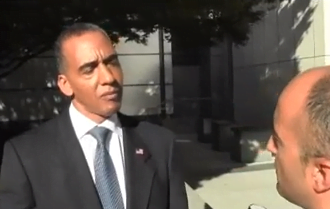As more consumers use social media to express their preferences, their location and what they’re purchasing and why, the more social intelligence can begin to inform predictions of business results. Social media analytics may offer early signifiers of how well a campaign, discount or show is preforming. For example, monitoring and categorizing social media conversations for consumer expressions of intention to buy or view can provide actionable insights into how well a a premier or coupon program is preforming within a select demographic, for a specific time frame
As more consumers use social media to express their preferences, their location and what they’re purchasing and why, the more social intelligence can begin to inform predictions of business results. Social media analytics may offer early signifiers of how well a campaign, discount or show is preforming. For example, monitoring and categorizing social media conversations for consumer expressions of intention to buy or view can provide actionable insights into how well a a premier or coupon program is preforming within a select demographic, for a specific time frame
Analyzing for those insights involves not only categorizing relevant data but the application of sophisticated filtering to surface consumer intentions and preferences as they related to a brand. A social indicator can be constructed to provide values related to behavior and intention of a consumer, but the underlying category may also include metadata, such as:
- demographic
- VOC
- life stage
- psychographic
- social media platform
- location
- sentiment
Data Informs the Path to Action
At the highest level, identified consumer expressions of intention or issues may tie directly to other business metrics. For example, social media conversation around intention to buy may provide direct and emerging knowledge of sales data. How an organization chooses to act upon that intelligence will involve an understanding of the other elements that have been captured in that specific category.
One important point to understand is that in order for social media analytics to move beyond simple monitoring for mentions it needs to be able to capture, in real-time, consumers disclosing their intentions and preferences. Not only does this data need to be accurate but there’s a certain level of sophistication required to extract additional meaning beyond a customer mentioning a product or brand. A more exact analysis of a consumer expressing a problem directly related to a product may provide a business with an early alert before the larger market becomes aware giving an organization enough time to equip their customer service agents with the knowledge to resolve the problem.
(This article on Twitter spreading the news of an outbreak before health officials provides a real-world description of this example.)
Using the Social Barometer
To enable your organization to leverage the predictive qualities of social media, identify those consumer activities that can be directly related to business metrics. You might call this your organization’s Social Barometer. After defining the social barometer for your organization apply that lens to your social analytics strategy. The resulting intelligence will be more valuable and actionable and, more importantly timely, which can be used to inform and optimize how an organization engages with your consumer in real-time.







